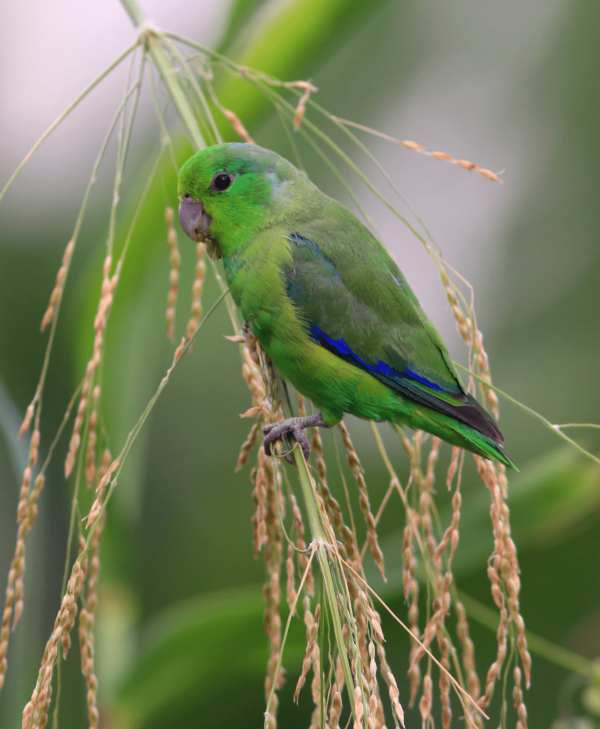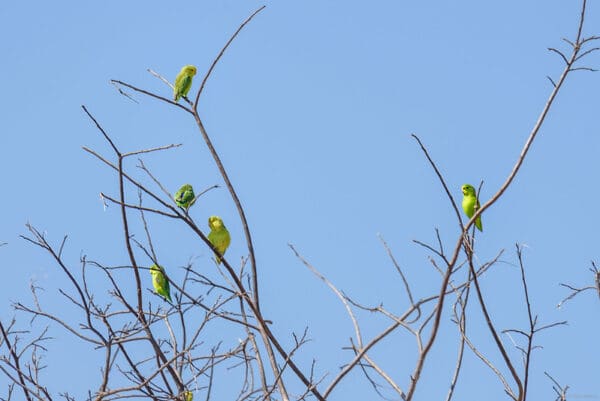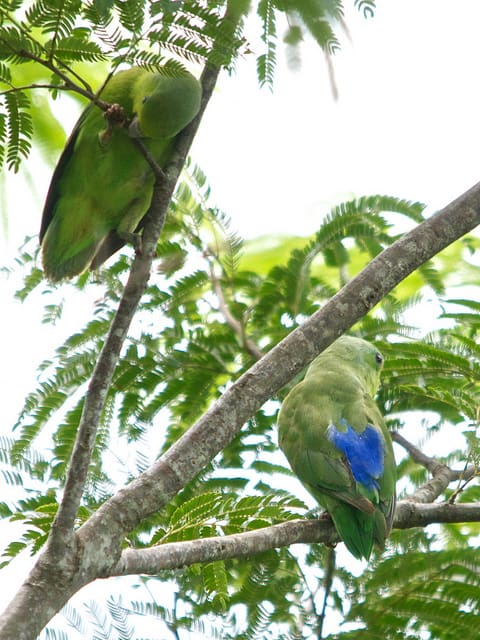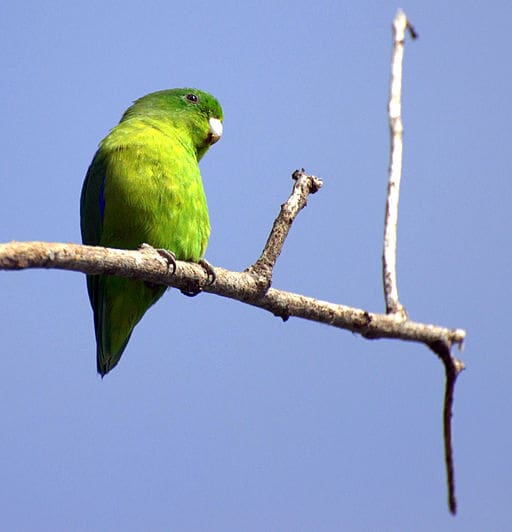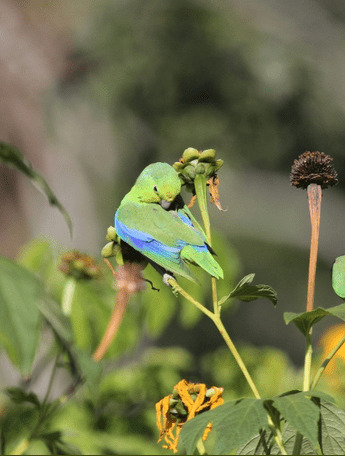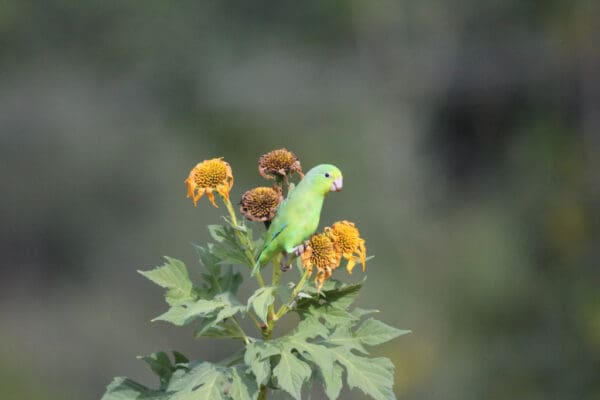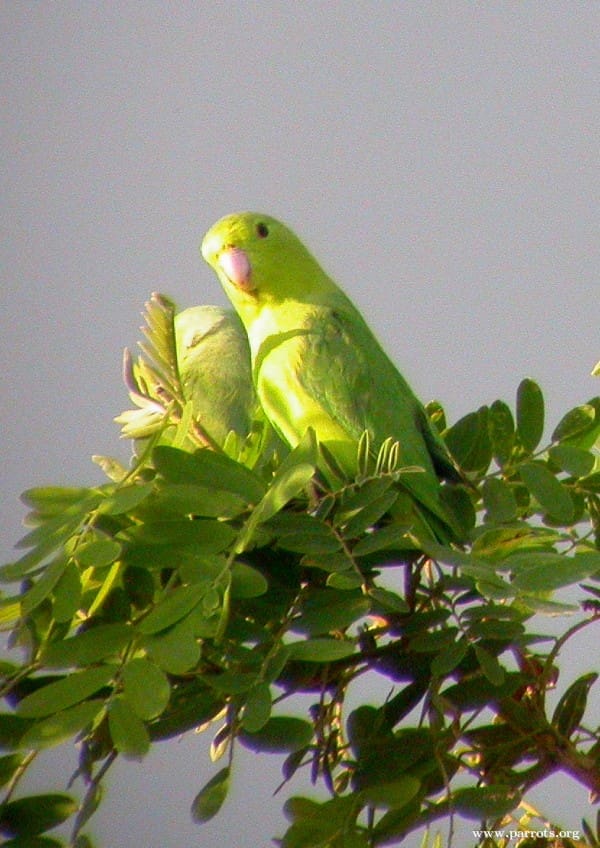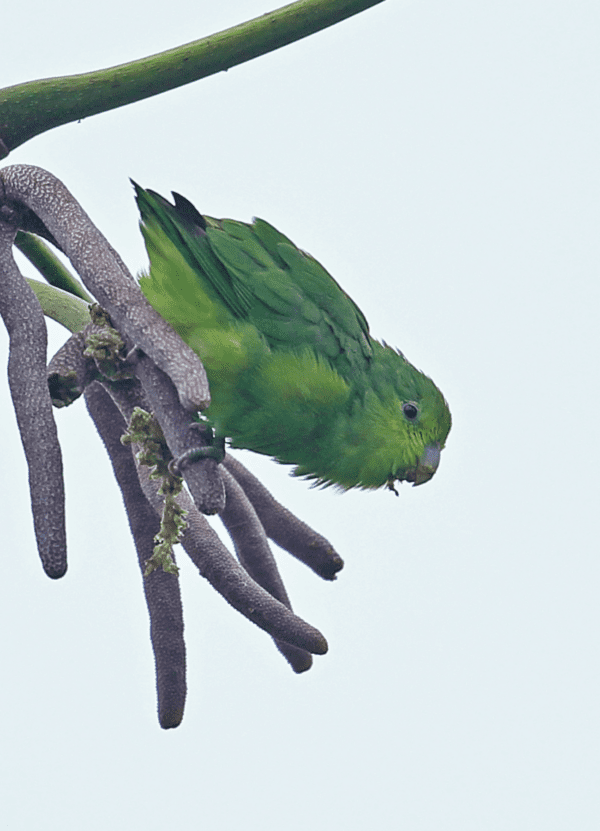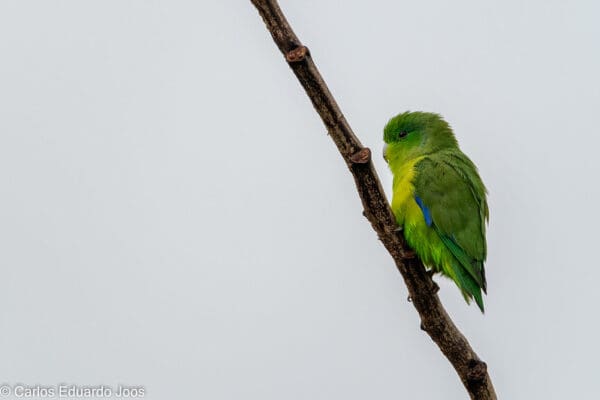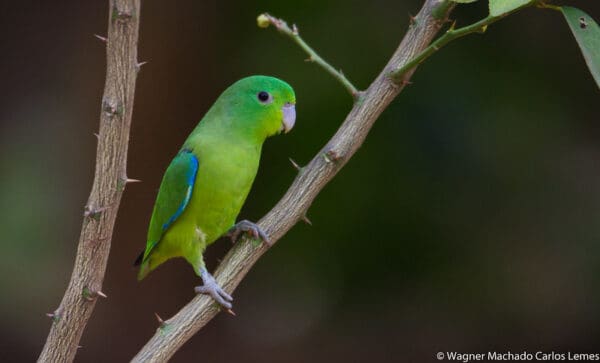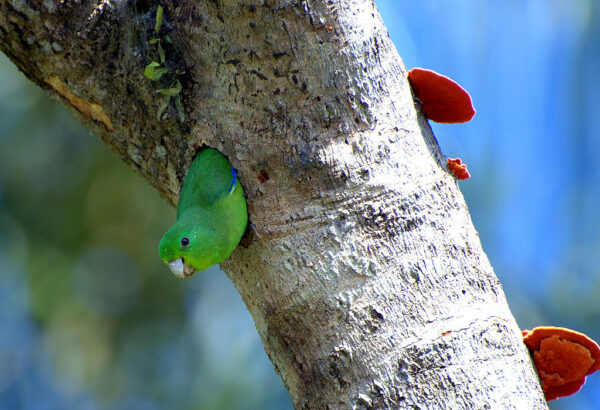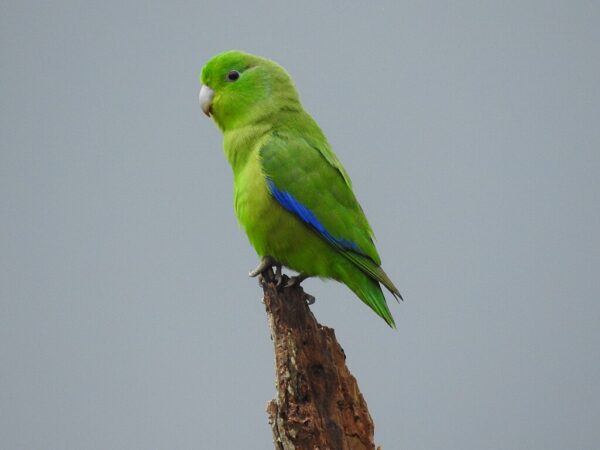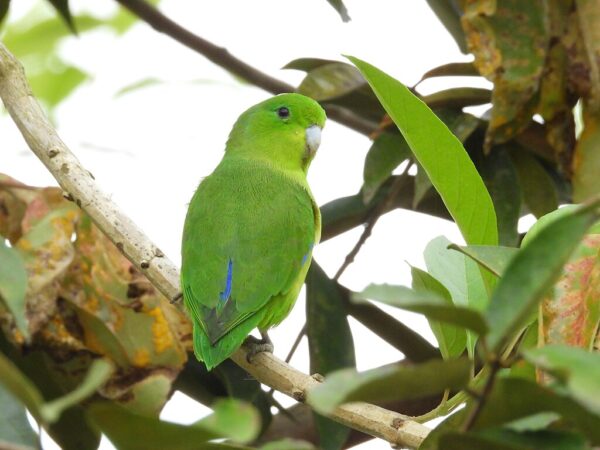Blue-winged Parrotlet
Also known as:
Cobalt-rumped Parrotlet
Also known as:
Cobalt-rumped Parrotlet
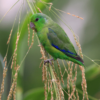
![© Allan Hopkins [CC BY-NC-ND 2.0] via Flickr Wild Blue-winged Parrotlets perch in a bare tree](https://parrots.org/wp-content/uploads/2023/01/wpt_Blue-winged-Parrotlet_1368-12-100x100.jpg)
![© Brian Ralphs [CC BY-SA 2.0] via Flickr Wild Blue-winged Parrotlets perch in a leafy tree](https://parrots.org/wp-content/uploads/2023/01/wpt_Blue-winged-Parrotlet_1368-11-100x100.jpg)
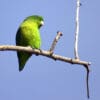
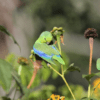
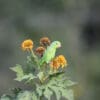
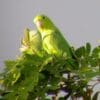

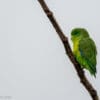
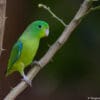
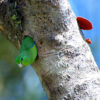


DID YOU KNOW?
The Blue-winged Parrotlet nests in tree cavities but will also try arboreal termitaria (termite mounds in trees).

Forpus

xanthopterygius
Size:
12 cm (4.7 in)
Weight:
28 g (1.0 oz)
Subspecies including nominate:
three: F.x. xanthopterygius, F.x. flavissimus, F.x. flavescens
Colour Adult:
F.x. xanthopterygius: Male-in general olive/green to green in colour; eyes surrounded by bright green; purple/blue primary and secondary coverts; purple/blue bases to outer webs of secondary feathers; purple/blue underwing coverts, lower back and rump. Beak horn in colour with grey at base of upper mandible. Eye dark brown. Female-green instead of blue markings; green/yellow forehead and face.
F.x. flavissimus: Male-paler, more yellow/green; yellow/green forehead, cheeks and throat. Female-paler and more yellow/green.
F.x. flavescens: Male-as in xanthopterygius, but yellow/green paler; green/yellow forehead, cheeks, and underparts; paler blue on lower back and rump. Female-as in xanthopterygius, but yellow/green paler.
Colour Juvenile:
F.x. xanthopterygius: As in adults but immature male has blue markings intermixed with green.
Call:
Calls in flight or when perched are sad sounding but penetrating. While feeding twittering and chattering.
More Information:
Content Sources:
CITES
BirdLife International
Cornell Lab of Ornithology/Birds of the World
Parrots: A Guide to Parrots of the World, Juniper and Parr, 1998
Parrots of the World, Forshaw and Cooper, 1977. 2010 edition
Parrots of the World, Forshaw, 2006.
Psittacine Aviculture, Schubot, Clubb and Clubb, 1992.
Captive Status:
Uncommon in captivity.
Longevity:
10-20 yrs
Housing:
2 x 1 x 2 m (6.5 x 3.3 x 6.5 ft) enclosure, or suspended indoor cage 120 cm x 40 cm x 50 cm (46.8″ x 15.6″ x 19.5″), with roosting box.
Diet:
Seed mix such as: millet, canary grass seed, weed seed, wheat and oats; millet spray, sprouted or unsprouted; fruit such as: apple, pear, orange, banana, pomegranate; vegetables such as: carrot, celery, green beans, peas in the pod; berries such as: rose hips, mountain ash (rowan); green leaves such as: Swiss chard, dandelion, chickweed, lettuce; insectivorous food; complete kibble if taken.
Enrichment:
Provide tree stumps, branches (are avid chewers); areas for bathing.
Nest Box Size:
Nest log 15 cm (6″) in diameter, 30 cm (11.7″) high or 6″ x 6″ x 6″ (15 cm x 15 cm x 15 cm) vertical box.
Clutch Size:
3-7
Fledging Age:
35 days
Hatch Weight:
—
Peak Weight:
—
Weaning Weight:
—
World Population:
Unknown but reported as common, stable.
IUCN Red List Status:
Least Concern
CITES Listing:
Appendix II
Threat Summary:
This species is considered to have a medium dependency on forest habitat, and tree cover is estimated to have declined by 7.3% within its mapped range over the past 10 years. As a precautionary measure, it is tentatively suspected that this forest loss may have led to a 1-19% decline in the species’ population over the same time frame.
Range:
F.x. xanthopterygius: NE Argentina in Misiones, NE Corrientes, E Chaco and E Formosa; and from Paraguay north through central and mideastern Brazil to N Bahia.
F.x. flavissimus: NE Brazil, from Maranhao, Ceara, and Paraiba south to N Bahia.
F.x. flavescens: CE Peru south to E Bolivia, in Beni and Santa Cruz.
Habitat:
Prefers drier wooded habitats such as open woodland, cerrado and caatinga; also found in savanna, palm groves, semi-arid scrubland and pastures.
Wild Diet:
Eats fruits of Cecropia, seeds of Mikania and Trema mirantha and flowers of Ambrosia and Marcgravia.
Ecology and Behaviour:
Will forage in the open and sometimes on the ground. Highly social; found in groups of up to 50 individuals.
Clutch and Egg Size:
3-7 spherical to elliptical eggs, 19.0 x 15.0 mm (0.7 x 0.6 in)
Breeding Season:
October-March; nest is in tree cavity (ie Cecropia), termite mound, fence-post or in abandoned nest of Rufous Hornero (Furnarius rufus).
